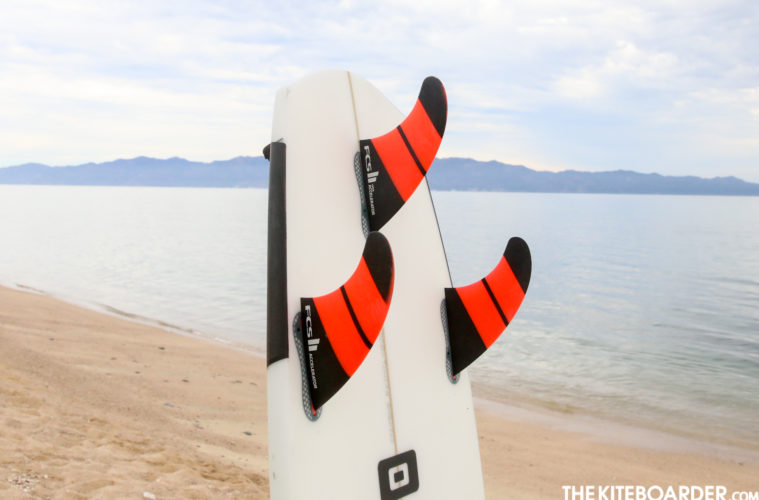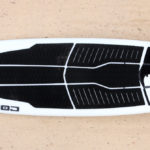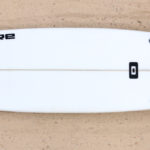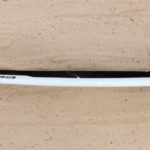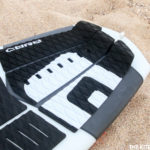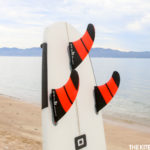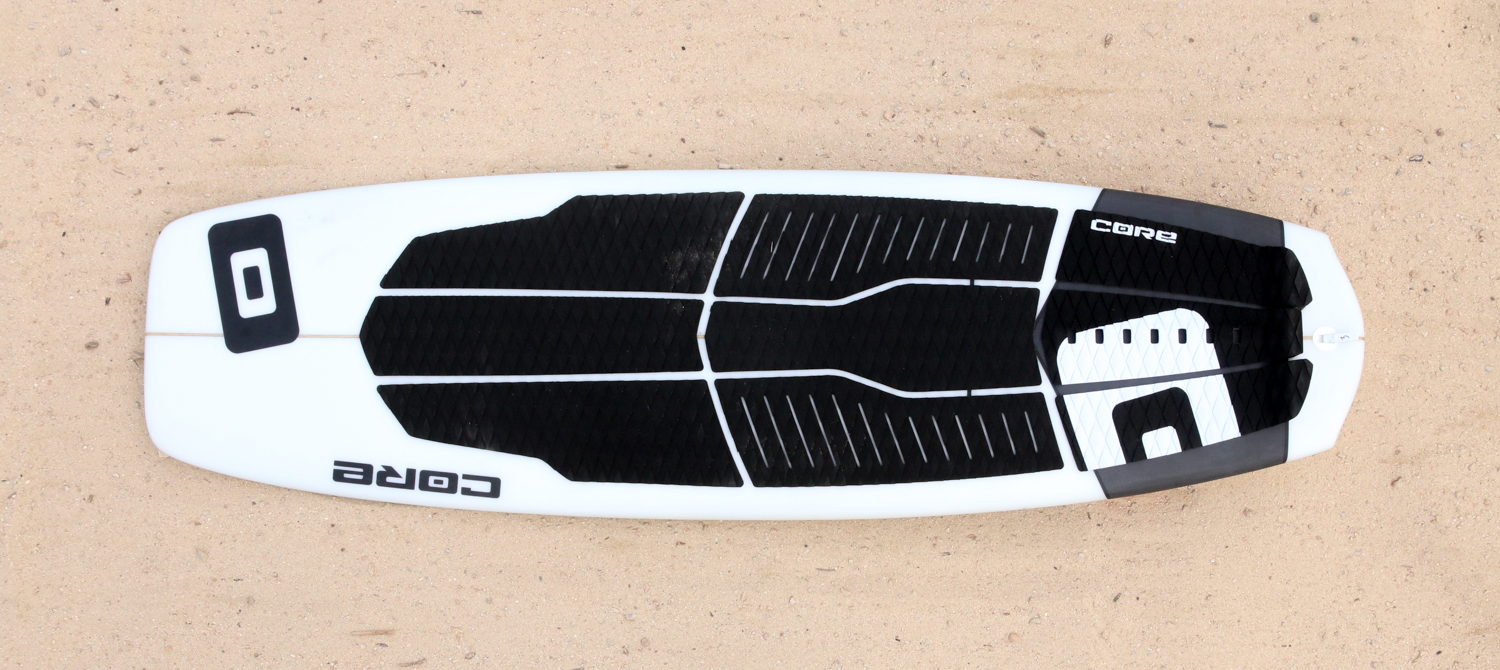 CORE 720 Name
CORE 720 Name
Sizes Available: 4’11” x 17 5/8″ x 1 7/8″, 21L, 5’1″ x 18 1/8″ x 2″, 22L, 5’3″ x 2 1/16″, 23L
Sizes Tested: 5’3″ x 2 1/16″, 23L
Core Says:
Jump on CORE’s newest directional, and light the fuse to adrenaline pumping, head turning, strapless action. The 720 brings a whole new level of style to just about any beach break. The short, compact shape practically glues itself to your feet even on big, explosive aerials. And is tough enough to take the landings. Crank out the same stylish turns in tough, wind driven break like you do on those glassy days. And in time, the 720 just might bring out your inner Tony Hawk.
When it comes to versatility, CORE’s smallest wave board plays in the big leagues. The 720 is the star player that loves surf style. You’d think a tiny board like the 720 would need a lot more wind but its flatter rocker and more parallel shape surprisingly planes faster than our Ripper 3. Think of it as your light wind secret weapon.
Visit for more info: www.corekites.com/us/boards/surfboards/720
Our Testers Say:
“Good volume, forgiving for learning jibes and other tricks with great upwind ability and smooth chop handling.” // Roland Erni
“Packs a lot of volume, but is smooth through the chop, carves well and planes quickly out of turns for awesome fun.” // Tom Moore
“One of the heavier weight boards but I liked the solid feel. Super stable, tracks really well with super comfy deck pad.” // Brad Poulos

Tkb Says:
The Core 720 was one of the few polyester boards in the test with its compact shape featuring parallel rails with a wider outline that offers up quick planing with extra volume and a lower rocker. The 720 sports a single concave running from tip to tail; both ends are noticeably boxy and full shaped with a thruster fin setup featuring FCS Accelerator IIs that are a cinch to pop in and out without a fin key. The full ¾ deck pad features a comfortable diamond pattern with the tail pad featuring a bump under your backfoot’s arch and a kick on the end to keep your foot on the board. Without inserts, the 720 is for dedicated strapless riders.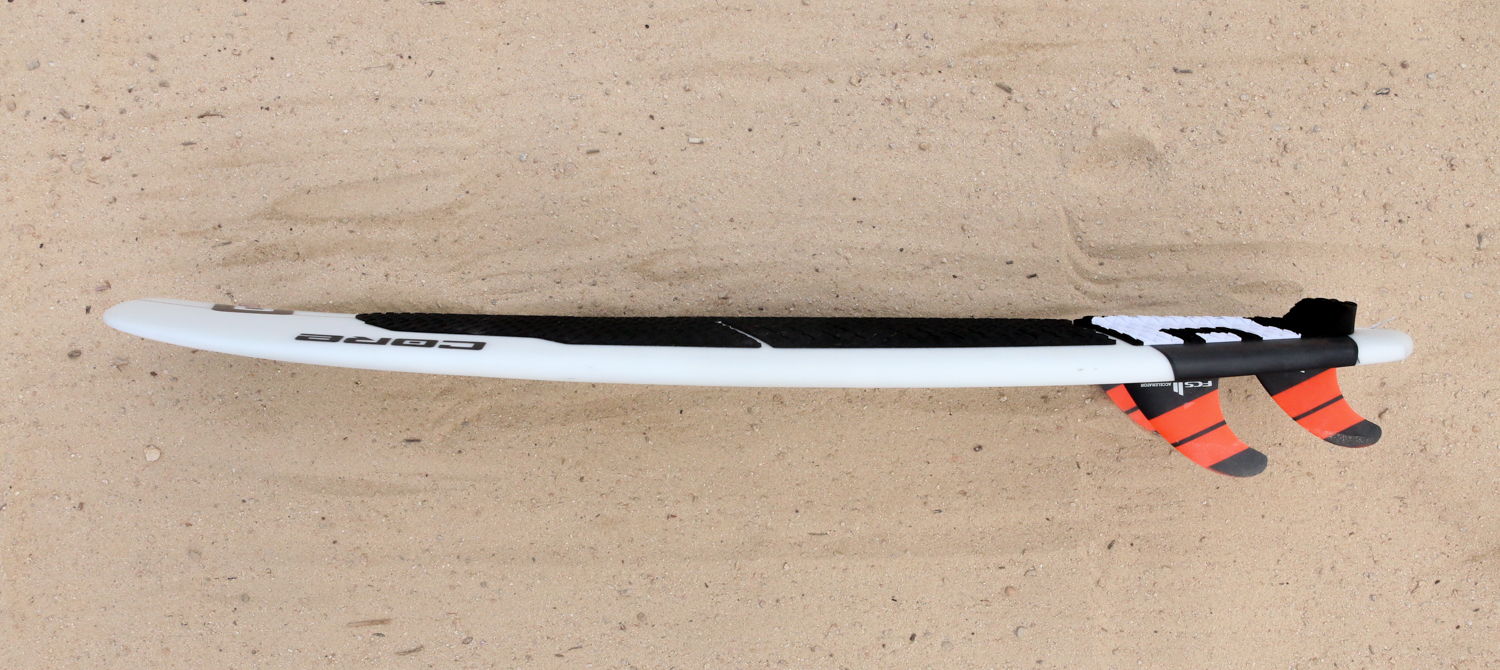
The first thing testers commented on was the 720’s hefty construction that offers a bit more volume than other compact surf shapes and a dense polyester feel compared to the tinny feel you sometimes get with popouts. The low rocker is early to plane and feels really fast through the water yet the 720 was also one of the most stable boards of the test, with really smooth and predictable edging on the way upwind. The large fins in the thruster setup offer a ton of grip that gives the tail a super locked-in feel. With the blocky nose and wider tail, the board offers a ton of volume that gives you a lot of surface area that translates to a ton of range, making the 720 quite adept at skating through lulls or underpowered sessions. The 720’s boxier tail requires a bit more input into the board to initiate carves; it helps to move your back foot back to make the board initiate turns faster, and once you figure out your surf stance, the 720 becomes quite adept at drawing fun lines in small and medium waves with stability and active snappy turns when needed. When it comes to strapless freestyle, the 720 is a super stable board for figuring out footwork and mastering tacks thanks to its wide and super stable deck. We like the boxier nose and tail for strapless airs with more surface area that feels very equalized to help you keep the board levitated and plastered to your feet. Having tested the largest size board in the range, we found that the 5’3″ board preferred higher wind sessions to keep the board connected during extended airs, but for pure strapless freestyle, we would move down a size or two to push the big air envelope. The 720’s generous volume and floaty approach to the compact shape delivers a user-friendly and stable ride that works well for freeride kiters with smooth handling through the worst of chop, locked in grip and tons of range that delivers strapless and carving bliss in high and low wind conditions.


